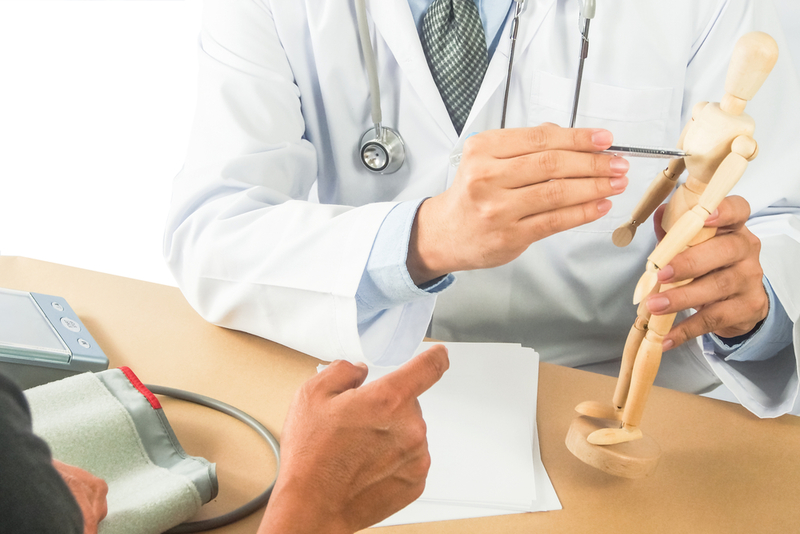Communication is Key to Your Success: 5 Ways to Have an Effective Patient Communication
M3 India Newsdesk Sep 25, 2022
The numerous years of education along with practical patient training keep doctors on their feet, ready to step outside into a new world of practising medicine. Here are the 5 key points that would help to enhance practitioners' relationships with the patients.
“Medicine is an art whose magic and creative abilityhave long been recognised as residing in the interpersonal aspects of patient-physician relationship”.
Hall et al.,1981
Medical school comes with a tough curriculum and an overall gripping medical educational experience for the students. In today’s internet-revolved generation, where everything is so easily available over the internet and that can be anything from basically a definition of a medical condition to patients seeking advice for self-medication, communication with our patients becomes a very key component in developing and maintaining that rapport and trust factor with the patients.
To understand the niche of communication skills one can garner these 5 skills as a medical professional in your day-to-day practice session.
1. Start off with confidence and assurance as start determines the end

- Starting off with a smile and a confident voice can be the first step in achieving a good patient relationship.
- Referring to the patient by their name, or asking them how they were doing could make the patient comfortable in the first instance.
- If the doctor is accompanied by a colleague, he or she should be introduced to the patient so the patient is not confused with the presence of other doctors in the room.
- Sitting at eye level and maintaining good positive eye contact can also help the patient feel more confident with respect to the doctor.
2. Be a good listener
Active listening to your patient’s chief complaint and medical problems can sometimes be the ultimate route to the diagnosis.

- Most of the time the patients speak up about tiny bits of medical history and important events while describing their conditions, and if the doctor is actively listening, that would give the patient more of a positive receptive field and encourage him or her to talk more freely.
- This will help the doctor build a positive relationship with the patient which is of utmost importance when it comes to treatment acceptance and patient compliance.
- Patiently waiting for the patient to finish and avoidance of any interruption is essential here. The unnecessary interruption will lead to a slightly more dominant approach from the doctor’s end and that can sometimes pull the patients back and they may be hesitant to talk ahead.
- This process of patiently listening to the individual will also give the doctor some time to take down running notes which can help in treatment planning and providing the right care.
3. Talking in the patient’s language
Most of the time as medical professionals we are used to using medical terms so often in our practice, that we stick to the same practice and that can leave our patients confused at times.

- After listening to the patient’s chief complaint, the process of explaining the reasons for the medical condition the patient is suffering and the suggested treatment should be explained in crisp and easy language which will be suggestive of all the important things the doctor aims to tell the patient.
- Using the same language as the patient will make the patient all the more comfortable. In this process, the doctor can also aim at asking some important and relevant questions which can help in getting more information.
- In terms of these questions, for instance, the doctor can ask more descriptive and open-ended questions which will give the patient more scope to describe the chief complaint rather than closed-ended questions which will prompt the patient to just answer a “yes” or “no”.
4. An empathy-driven approach
Just handing the diagnosis to the patient and walking away or giving away the prescription and asking the patient to leave the desk, will not only leave the patient uncertain about the diagnosis and treatment but will also leave a bad taste in the practice and the quality of healthcare.

- A good and effective doctor-patient relationship will involve a lot of passive hand-holding by the doctor in order to guide the patient on the right path. And that can be done by using the approach of developing empathy toward the patients.
- As doctors, it is important that we listen to our patients and understand their points of view even if we have different opinions with respect to them.
5. Communication is not just talking
To develop a good rapport and help the patient understand the treatment and medication condition better the doctors can use the following approaches too to facilitate better communication.
Hand-outs for visual understanding

- Short videos explaining common medical conditions
- Follow-up instruction sheets for better understanding
- Informative pamphlets or e-pamphlets for patient education
- Sending short informative videos/e-posters and messages on regular basis for patient education and for staying in touch with the patients
- Use of social media platforms
The BATHE technique
The BATHE technique is the best way to summarise all the effective communication skills a healthcare professional should garner
A strategy for communicating with the patient who has non-medical concerns
Background
“What is going on in your life?”
(Elicits context of the patient’s visit)
Affect
“How do you feel about what is going on?”
(Allows patient to report current feelings)
Trouble
“What about the situation troubles you the most?”
(Helps you and the patient focus on one aspect of the problem)
Handling
“How are you handling that?”
(Provides assessment of how the patient is functioning)
Empathy
“That must be very difficult for you.”
(You then reinforce the patient’s coping strategies or suggest alternatives)
Effective communication with patients is an extremely important part of the role of doctors to provide high-quality healthcare. A good doctor-patient relationship can increase job satisfaction and that in turn will help the doctors work and function better. Also, it can be a very big source of motivation and reassurance to the ailing patient. It will mentally help the patient come to terms with the medical condition he or she is suffering and that will in turn help in a better and faster recovery.
Click here to see references
Disclaimer- The views and opinions expressed in this article are those of the authors and do not necessarily reflect the official policy or position of M3 India.
About the author of this article: Dr Ridima Surve is a practising dentist from Mumbai.
-
Exclusive Write-ups & Webinars by KOLs
-
Daily Quiz by specialty
-
Paid Market Research Surveys
-
Case discussions, News & Journals' summaries